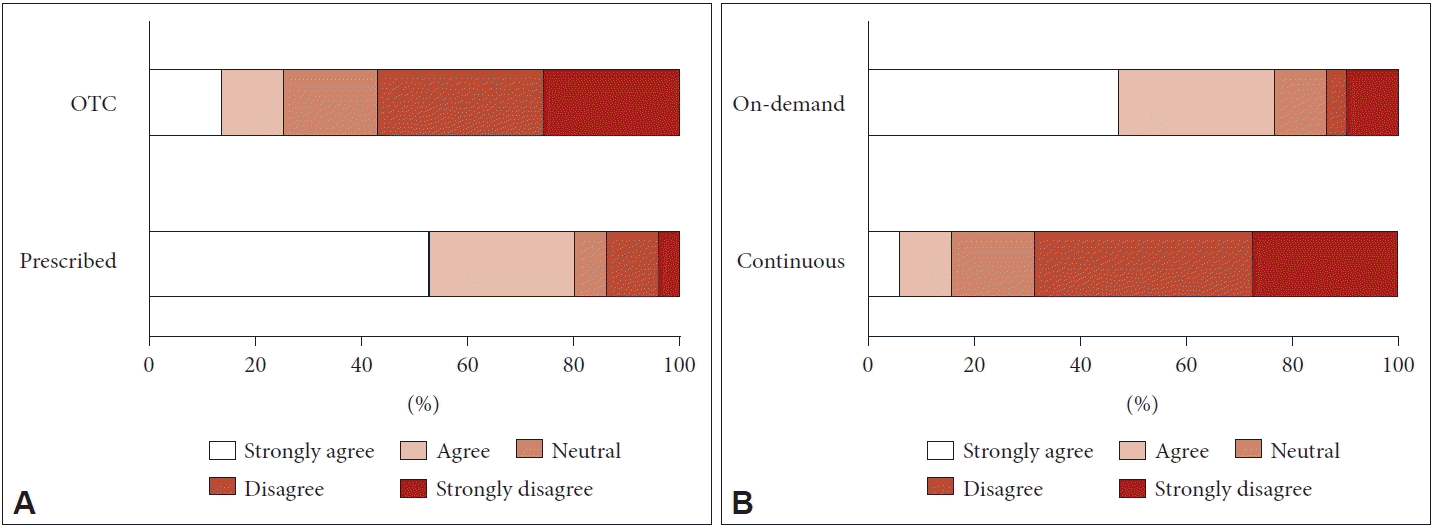1. Jarvis D, Newson R, Lotvall J, Hastan D, Tomassen P, Keil T, et al. Asthma in adults and its association with chronic rhinosinusitis: the GA2LEN survey in Europe. Allergy. 2012; 67(1):91–8.

2. Salo PM, Calatroni A, Gergen PJ, Hoppin JA, Sever ML, Jaramillo R, et al. Allergy-related outcomes in relation to serum IgE: results from the national health and nutrition examination survey 2005-2006. J Allergy Clin Immunol. 2011; 127(5):1226–35.e7.

3. Rha MS, Cho HJ, Yoon JH, Kim CH. Association between the use of electronic cigarettes and the prevalence of chronic rhinosinusitis and allergic rhinitis: a nationwide cross-sectional study. Rhinology. 2022; 60(1):20–8.
4. Bousquet J, Schünemann HJ, Togias A, Bachert C, Erhola M, Hellings PW, et al. Next-generation Allergic Rhinitis and its Impact on Asthma (ARIA) guidelines for allergic rhinitis based on Grading of Recommendations Assessment, Development and Evaluation (GRADE) and real-world evidence. J Allergy Clin Immunol. 2020; 145(1):70–80.e3.
5. Wise SK, Lin SY, Toskala E, Orlandi RR, Akdis CA, Alt JA, et al. International consensus statement on allergy and rhinology: allergic rhinitis. Int Forum Allergy Rhinol. 2018; 8(2):108–352.
6. Valovirta E, Ryan D. Patient adherence to allergic rhinitis treatment: results from patient surveys. Medscape J Med. 2008; 10(10):247.
7. Valovirta E, Myrseth SE, Palkonen S. The voice of the patients: allergic rhinitis is not a trivial disease. Curr Opin Allergy Clin Immunol. 2008; 8(1):1–9.

8. Shin YS, Jung JW, Park JW, Choi JH, Kwon JW, Lee S, et al. Clinical efficacy of allergen-specific immunotherapy from patient and physician perspectives. Yonsei Med J. 2019; 60(5):446–53.

9. Björnsdottir US, Jakobinudottir S, Runarsdottir V, Juliusson S. The effect of reducing levels of cat allergen (Fel d 1) on clinical symptoms in patients with cat allergy. Ann Allergy Asthma Immunol. 2003; 91(2):189–94.

10. Wood RA, Johnson EF, Van Natta ML, Chen PH, Eggleston PA. A placebo-controlled trial of a HEPA air cleaner in the treatment of cat allergy. Am J Respir Crit Care Med. 1998; 158(1):115–20.

11. Jose J, Coatesworth AP. Inferior turbinate surgery for nasal obstruction in allergic rhinitis after failed medical treatment. Cochrane Database Syst Rev. 2010; 12:CD005235.

12. Karatzanis AD, Fragiadakis G, Moshandrea J, Zenk J, Iro H, Velegrakis GA. Septoplasty outcome in patients with and without allergic rhinitis. Rhinology. 2009; 47(4):444–9.

13. Passàli D, Lauriello M, Anselmi M, Bellussi L. Treatment of hypertrophy of the inferior turbinate: long-term results in 382 patients randomly assigned to therapy. Ann Otol Rhinol Laryngol. 1999; 108(6):569–75.

14. Bousquet JJ, Schünemann HJ, Togias A, Erhola M, Hellings PW, Zuberbier T, et al. Next-generation ARIA care pathways for rhinitis and asthma: a model for multimorbid chronic diseases. Clin Transl Allergy. 2019; 9:44.
15. Bukstein D, Luskin AT, Farrar JR. The reality of adherence to rhinitis treatment: identifying and overcoming the barriers. Allergy Asthma Proc. 2011; 32(4):265–71.

16. Baena-Cagnani CE, Canonica GW, Zaky Helal M, Gómez RM, Compalati E, Zernotti ME, et al. The international survey on the management of allergic rhinitis by physicians and patients (ISMAR). World Allergy Organ J. 2015; 8(1):10.

17. Blaiss MS, Steven GC, Bender B, Bukstein DA, Meltzer EO, Winders T. Shared decision making for the allergist. Ann Allergy Asthma Immunol. 2019; 122(5):463–70.

18. Steven GC. Shared decision making in allergic rhinitis: an approach to the patient. Ann Allergy Asthma Immunol. 2020; 125(3):268–72.




 PDF
PDF Citation
Citation Print
Print






 XML Download
XML Download